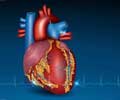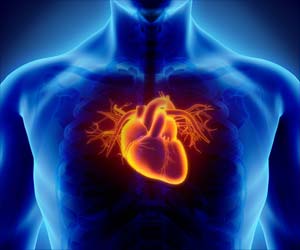Identification of a genetic variant in a cardiac protein that can be linked to heart rhythm dysfunction was made my cardiovascular researchers at the University of Cincinnati (UC).

Dilated cardiomyopathy is a condition in which the heart becomes weakened and enlarged and cannot pump blood efficiently.
These findings are being presented for the first time at the International Society of Heart Research's Pathology and Treatment of Heart Failure meeting in Banff, Alberta, held May 27 through May 31, 2012.
The team led by Vivek Singh, PhD, a research scientist under the direction of Litsa Kranias, PhD, in the department of pharmacology and cell biophysics at UC, says that sudden cardiac death is a risk for patients with heart failure who are carriers of this variant in the histidine-rich calcium-binding protein because the calcium inside their heart cells is not properly controlled, possibly leading to the development of arrhythmias.
"The histidine-rich calcium-binding protein (HRC) is a regulator of calcium uptake and release in the sarcoplasmic reticulum, a network of tubes and sacs in heart muscle fibers that plays an important role in heart contraction and relaxation by releasing and storing calcium ions," Singh says.
"Recently, our group at UC and Athens, Greece, identified a genetic variant in HRC, named Ser96Ala, which showed a significant association with worsening ventricular arrhythmias and sudden cardiac death in a group of patients with idiopathic dilated cardiomyopathy. In this study, our team characterized the mechanisms and pathways that link the HRC variant with arrhythmias causing sudden death."
Advertisement
"Unexpectedly, we found that contractility of heart cells significantly decreased with disturbed calcium regulation in A96A hearts when compared with S96S hearts," Singh says. "In addition, A96A heart cells showed more arrhythmic behavior under stress conditions."
Advertisement
"Our results showed that the human HRC mutant model displayed altered intracellular calcium (Ca2+) handling, associated with slowed Ca2+ uptake and increased Ca2+ leak, which may promote arrhythmias under stress," Singh says. "These new findings are important because we can use this information to help develop new methods of screening human patients and preventing arrhythmia development in the carriers."
Source-Eurekalert














